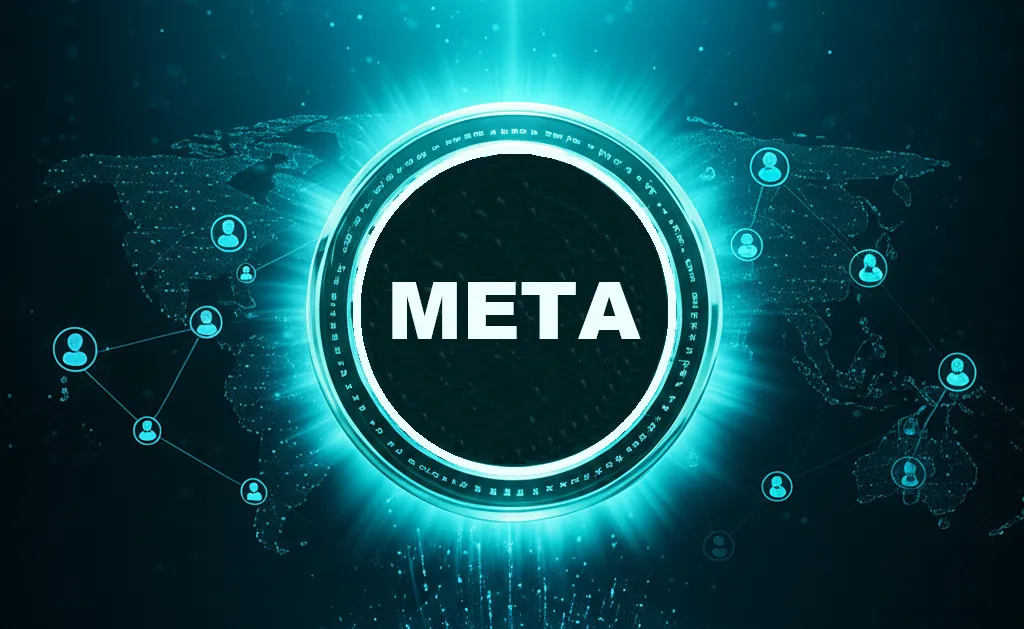Just three years after its initial foray into the digital asset market ended in disappointment, Meta Platforms Inc. (formerly Facebook) is reportedly exploring the introduction of a stablecoin, signaling a potential return to the crypto space. Meta’s previous attempt, initially named ‘Libra’ and later rebranded as ‘Diem,’ aimed to launch a digital currency but ultimately faltered due to strong opposition from regulatory bodies worldwide. The company’s ambition to extend its social media dominance into the financial realm seemed to have dissolved.
However, recent reports suggest that Meta is now collaborating with digital asset companies to develop solutions for content creator revenue management using stablecoins. This renewed interest is further evidenced by the hiring of a new vice president of product with experience in digital assets. With a massive user base of approximately 3 billion across Facebook, Instagram, and WhatsApp, Meta’s potential integration of digital asset wallets and payment options demonstrates a clear determination to overcome past setbacks. The question now is whether Meta can leverage its past experiences to successfully establish a foothold in the digital asset market this time around.

The ‘Diem’ Debacle: Why Did It Fail?
Meta’s first stablecoin project, ‘Diem,’ faced significant controversy from its inception. Concerns primarily revolved around the potential threat to the stability of the existing financial system and the disruption of national monetary policies posed by a platform as large as Facebook issuing its own digital currency. Several key factors contributed to the ultimate demise of the ‘Diem’ project:
- Strong Opposition from Global Regulators: Financial authorities in major countries like the United States and Europe expressed strong reservations about the potential impact of Meta’s vast user base, leading to intense regulatory pressure. Issues related to personal data protection and the potential for money laundering were also persistent concerns.
- Clash with Traditional Financial Systems: While ‘Diem’ was intended to be a stablecoin pegged to fiat currencies, it was perceived as a challenge to central banks’ monetary sovereignty and financial policies, leading to a fundamental conflict with the existing financial order.
- Withdrawal of Key Partners: Major payment processors, including Visa, Mastercard, and PayPal, who were initial partners in the ‘Libra’ project, withdrew due to regulatory uncertainties and internal disagreements, weakening the project’s momentum.
Ultimately, despite years of effort, Meta failed to gain the necessary approvals from global regulators and decided to sell its ‘Diem’ assets in January 2022, temporarily putting its digital currency ambitions on hold.
A New Foundation: What’s Different This Time?
Returning to the stablecoin arena after three years, Meta has likely learned valuable lessons from its past failures. We can anticipate a revised strategy focusing on the following:
- Leveraging Existing Stablecoins: Instead of issuing its own stablecoin, Meta might collaborate with established and reputable stablecoins already in the market. This approach could minimize regulatory hurdles and lower the barrier to market entry. While specific partnerships haven’t been announced, major stablecoins like USDC or USDT are potential candidates.
- Focusing on Specific Use Cases: Rather than aiming for a global digital currency as before, Meta might concentrate on practical applications such as content creator revenue management or cross-border remittances. By demonstrating tangible value in specific areas, they could gradually address regulatory concerns.
- Hiring Digital Asset Expertise: The recruitment of a seasoned professional with deep understanding and experience in the digital asset market underscores Meta’s serious and cautious approach to this renewed effort. Their expertise will likely guide a more pragmatic and regulation-friendly strategy.
- Gradual Service Rollout: Instead of immediately introducing digital asset services to its entire 3 billion user base, Meta might opt for a phased rollout, starting with specific regions or features. This would allow them to monitor regulatory responses and market reactions while minimizing risks.
Meta Stablecoin: What Are the Chances of Success?
While Meta’s renewed approach suggests a more strategic direction, significant challenges remain before its success can be assured.
- Persistent Regulatory Hurdles: Regulatory authorities worldwide remain cautious about the entry of big tech companies into the financial market. Meta’s ability to build trust and foster cooperation with these authorities, learning from past missteps, will be crucial for success.
- Competition from Existing Stablecoins: The market already hosts numerous stablecoins, each with its own advantages and user base. As a late entrant, Meta will need to offer a differentiated value proposition and superior user experience to gain a competitive edge.
- User Adoption: While a 3 billion user base presents a significant advantage, the willingness of these users to actively adopt Meta’s digital asset wallets and payment options is uncertain. Prioritizing user convenience and offering tangible benefits will be essential.
However, Meta’s powerful platform influence cannot be ignored. If the company can develop user-friendly digital asset wallets and payment systems and demonstrate practical use cases like streamlined content creator payments or efficient international transfers, its vast user network could enable rapid market penetration.
Beyond Past Failures: Dreaming of a New Digital Financial Ecosystem?
Meta’s re-entry into the stablecoin market evokes memories of the ‘Diem’ project’s setbacks, but it also generates anticipation for the changes a major platform company could bring to the digital asset landscape. Meta’s efforts to analyze past failures and pursue a more realistic and regulation-aware strategy are noteworthy.
Of course, the challenges of navigating regulatory barriers and differentiating itself from existing market players remain. However, with its unparalleled user base and platform influence, Meta has the potential to successfully shape a new digital financial ecosystem. The industry will be watching closely to see how Meta proceeds and what new developments unfold in the digital asset market.


